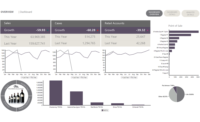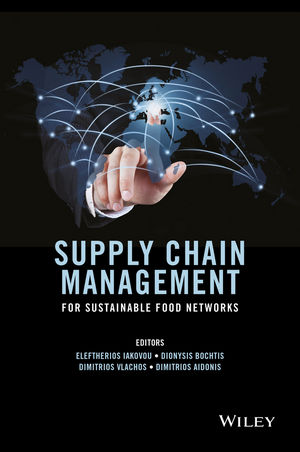When you think of threats to the food supply chain, the word “contamination” and food recalls and foodborne illness outbreaks likely come to mind. If you manage a food supply chain, particularly those involving fresh foods, you are well aware of their inherent risk.
Contamination is an extreme, albeit real, threat to food supply chains; however, because of regulations such as the Food Safety Modernization Act (FSMA) and the diligence of businesses all along the chain, recalls and illness remain relatively rare. There are other factors though that pose threats to food supply chains. These include fluctuations in commodity pricing, weather-related transportation disruptions, breakdowns in asset processing (e.g. a distribution center is unexpectedly forced to close), geopolitical challenges, shifting consumer demand and any number of other variables. When businesses are unprepared to respond to these events, they risk supply chain inefficiencies and negative impacts on profitability and reputation.
Too often, businesses take a once yearly (or even less frequent) approach to supply network management. They may contract with specific suppliers and transportation providers, determine the most favorable geographic layout of warehouses and distribution centers and anticipate demand patterns, but their decisions are based largely on assumptions. The challenge with this “fix it and forget it” process is that when changes in supply availability or demand occur, it is difficult to swiftly change course and mitigate effects across the supply chain. Issues such as transportation network breakdowns from extreme weather or labor challenges caused by strikes cannot necessarily be predicted, and companies need to move quickly. There can be large peaks and troughs in supply and demand, and a bullwhip effect may occur as the network attempts to correct itself.
A better approach is dynamic network management, or always-on analytics, where small revisions are continually made to the system in real time. Rather than waiting for a major event to occur, a dynamic network approach means having processes in place to monitor supply and demand information on a regular basis and communicate with partners all along the chain to make adjustments as necessary. Ongoing system optimization means not getting caught unaware or unprepared. The threats to supply chain that arise when variables fluctuate are mitigated because businesses have anticipated and planned for them.
A fast-changing variable within supply chains, and one likely to wreak havoc (inefficiency and cost) across the network, is consumer demand. Consumer food preferences have become increasingly varied; today’s consumers are likely to want gluten-free, dairy-free, soy-free, nut-free, non-GMO and locally-sourced foods even as they want increasingly exotic flavors and year-round access to seasonal offerings. Kale, acai and quinoa, once the foods du jour, have waned in popularity while the National Restaurant Federation, Washington, D.C., reports that poke and ethnic spices are trending on menus. Expect grocers and restaurants to feature more of these foods in their stores and menus and to build them into promotions and limited-time offers (LTO).
LTOs, after all, are a great way to experiment with new product offerings or to reintroduce customer favorites. But, they are not without risk. Too often, suppliers do not have a clear view of what is happening at the restaurant or store level, putting restaurant operators and store managers at risk of inventory stock-outs and overages if there are any changes in plan or deviations from what has been assumed will happen. A dynamic network management approach mitigates these risks.
For instance, if there is a particularly severe outbreak of influenza in a region of the country that keeps consumers at home and out of restaurants during an LTO, businesses that are monitoring this information in real time and communicating with their partners along the chain can slow inventory to the affected stores or move food out of stores to other locations where demand is constant or increasing, thereby reducing the risk of obsolescence.
Similarly, dynamic network management can minimize breaks in supply when demand is higher than anticipated or sources are at risk. Investments in food traceability processes help mitigate the threat of contamination and limit its spread, while also enabling a dynamic approach to network management. Consider the current administration’s suggestion of a proposed tariff on imports from Mexico and the impact this could have on the availability of avocados in the United States. Businesses that are monitoring this variable and taking steps to protect supply (e.g. identifying alternative suppliers in other countries, preparing to negotiate new contracts and coordinate new distribution routes if necessary) will be nimble enough to make adjustments and stave off high prices, lost sales, upset customers and damage to brand reputation that could result from breaks in supply.
Data, visibility and communication across the chain are essential to dynamic network management. Businesses must have processes in place to monitor supply and demand information on a regular basis, have the technology to provide data in real time and maintain consistent communication between marketers, planners, supply chain managers and partners throughout the supply chain.
In a global market characterized by instantaneous changes, the biggest threat to food supply chains is complacency. It is clear that continually monitoring the variables that impact food supply chains and making small adjustments and revisions to systems in real time can help stave off bigger issues.






